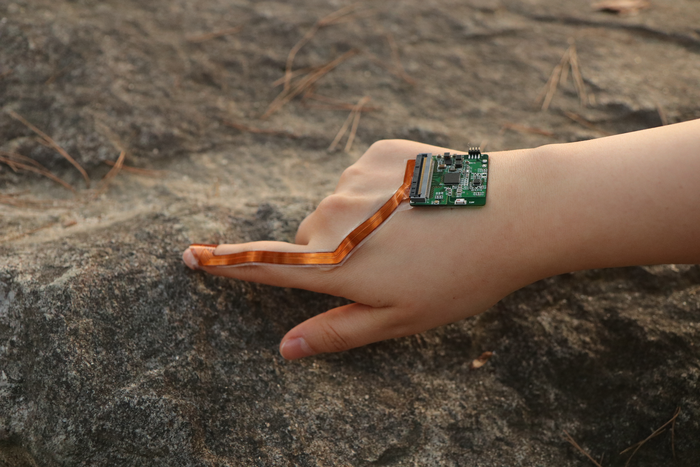
As the metaverse and other virtual worlds like it ramp up, researchers are continuing to look for new and exciting ways for users to remotely interact with others. Scientists at the Electronics and Telecommunications Research Institute (ETRI) in South Korea have created a prototype device that allow users to send and receive tactile sensations. This sort of “telehaptic” interaction device isn’t completely new, but the size and wearability of this prototype sets it apart from past efforts.
The device is worn on the back of the hand of both the person sending as well as the person receiving the sensations, and makes use of piezoelectric materials to replicate tactile phenomena. As the sender runs their finger along a surface, the surface’s unique tactile pattern causes vibrations in the piezoelectric material, which is then sent via an electrical signal to the other user.
The prototype so far has been able to replicate the feeling of cotton, polyester, spandex, and even protruding letter surfaces and the feeling of plastic rods rolling along the fingertips.
ETRI’s Intelligent Sensors Research Section Principle Researcher Hye Jin Kim stated, “Through the light and flexible on-skin tactile reproduction device that can be attached to the skin, we have taken a step forward in preparing a foundation environment for developing highly immersive virtual/augmented reality content.”
The research team has said further work will be done to advance the performance and form of the prototype to create more complex texture levels, as well as the ability to replicate feelings of heat and cold. While we all wait on the dream of smellovision, the means to virtually interact with physical touch may come sooner than we think.
SOURCE: EurekAlert
See also: Mind blown: New study upends the understanding of color perception










